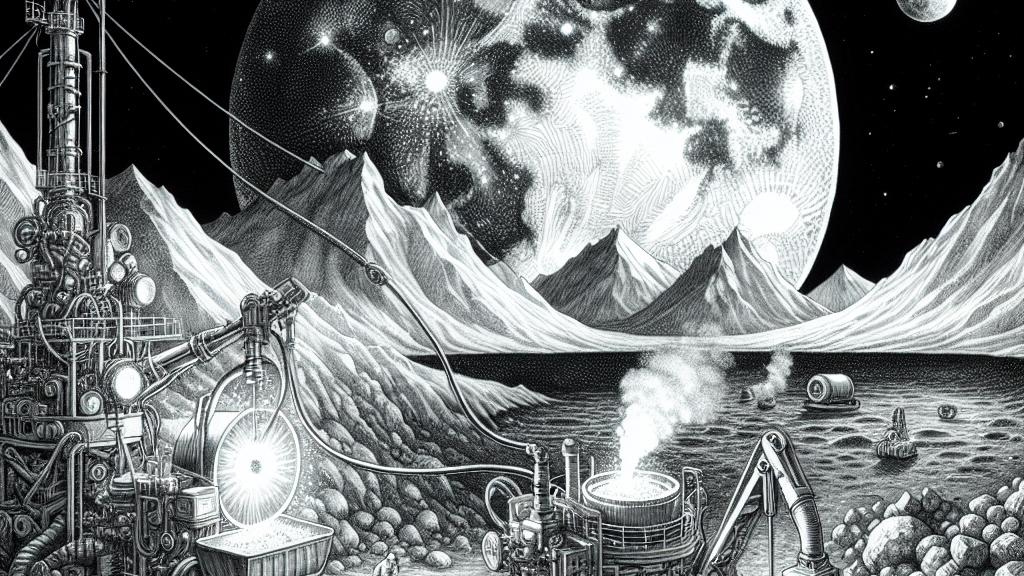Should We Mine the Moon? Important Questions to Explore
Overview
- Unearth the captivating potential of lunar mining and its vast benefits.
- Delve into the environmental consequences and intricate ownership issues surrounding moon resources.
- Highlight the critical need for worker safety and ethical practices in space exploration.

The Rationale Behind Lunar Mining
As we step boldly into the next decade, the ambitious idea of mining the moon is transforming from a distant dream into an astonishing reality for various nations and pioneering private enterprises. Why is this so critical? The moon, often romanticized in our folklore, is actually teeming with invaluable resources just waiting to be tapped. For instance, imagine the potential of converting abundant water ice into hydrogen and oxygen—fuel for rockets could now be generated on-site! This innovation would dramatically reduce the exorbitant costs of transporting supplies from Earth, where a single liter of water can become more expensive than gold by the time it reaches lunar orbit. Additionally, accessing rare Earth metals found on the moon could ease the mounting pressure on Earth's dwindling resources, vital for producing the latest smartphones and electric vehicles. If we seize this opportunity to explore these extraterrestrial materials, we could not only ensure a sustainable future but also maintain technological advancements that are crucial for our society.
Visual Changes in the Night Sky
But let’s pause and reflect on what this means for our connection with the moon. Picture this scenario: as mining operations commence, they will inevitably disturb the moon's serene surface, sending clouds of dust and particles swirling into the void. Over time, these operations may create distinctly bright patches where dull, untouched ground used to be, subtly yet profoundly altering the lunar landscape. Can you imagine the awe of future generations looking up and pondering why the moon appears different each night? This captivating shift might not only transform how we perceive our closest celestial neighbor but could also provoke discussions about preservation and the legacies we leave behind. Would we still regard the moon as an inspiring symbol of exploration, or would it simply become a raw resource waiting to be harvested?
Ownership and Ethics of Lunar Resources
Yet, one of the most pressing questions remains: who owns the moon? The Outer Space Treaty explicitly prohibits nations from claiming ownership of celestial bodies, creating a tangled web of legal challenges for mining enterprises. Should we consider the resources derived from the moon as a shared treasure that benefits all humankind, or can they be owned and controlled by those who mine them first? This contentious issue has wide-reaching implications. For example, imagine a future where only a handful of wealthy nations and corporations control lunar resources, while the rest of the world is left out of this galactic bonanza. This scenario could spark conflict, not just over resources but for equity as well. Hence, it’s crucial to establish inclusive frameworks that ensure the fair sharing of lunar wealth, fostering a cooperative spirit to avert deepening inequalities and conflict.
Worker Safety on the Moon
Now, let's turn our attention to the human element involved in these grand ambitions. What would life be like for workers toiling away on the lunar surface? While it might sound like the ultimate adventure, the stark reality is filled with challenges. Picture this: miners dealing with the extreme isolation of space, enduring low gravity, and battling the ever-present dangers of cosmic radiation. Their daily life would involve grueling hours under harsh conditions, with the looming threat of accidents and health issues. For instance, extended exposure to low gravity increases the risk of bone and muscle degeneration, while isolation could lead to severe psychological stress and health consequences. Thus, the uncompromising need for comprehensive safety regulations and protocols is paramount. If we fail to prioritize their health and welfare, we risk sacrificing not only their lives but also the credibility of our exploration efforts. Protecting these brave souls should be as vital as extracting the resources themselves.

Loading...